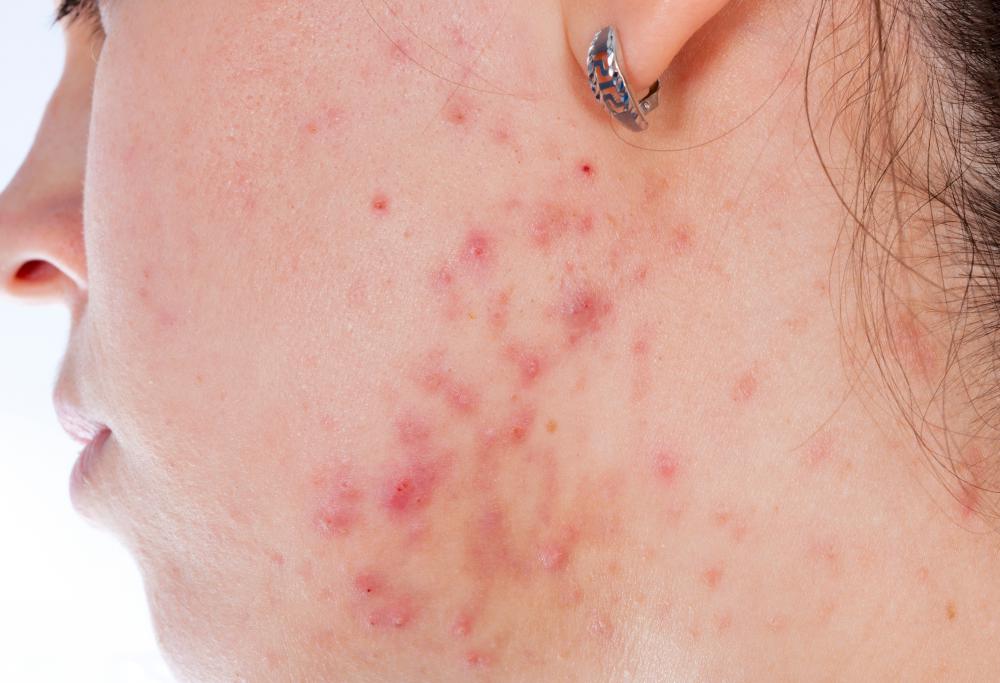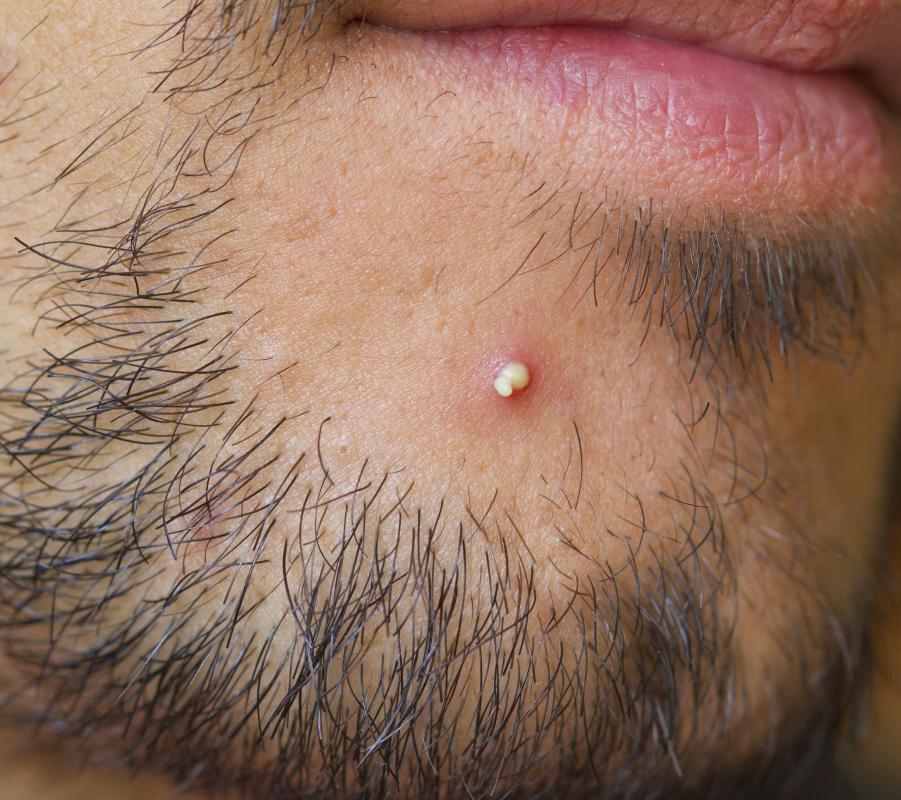At WiseGEEK, we're committed to delivering accurate, trustworthy information. Our expert-authored content is rigorously fact-checked and sourced from credible authorities. Discover how we uphold the highest standards in providing you with reliable knowledge.
What Are the Common Causes of Pus on the Face?
Acne is the most common cause of pus on the face, although other conditions may cause this symptom as well. Rosacea, pustular psoriasis, and skin abscesses may also cause pus to ooze onto the face. Boils or inflammation of the hair follicles can sometimes cause facial pus as well. The bumps or blisters containing the pus should not be popped or ruptured unless directed to do so by a doctor. A dermatologist is a doctor who specializes in the diagnosis and treatment of skin disorders and may be the most qualified to deal with issues that cause pus on the face.
Pimples are common among those with acne, but these pimples can sometimes become filled with pus. Many people instinctively pop or rupture these pimples in an effort to drain the pus and reduce the size of the lesion. Most medical professionals do not recommend this practice because infectious materials contained within the pus can spread and cause additional lesions to develop. Permanent scars may also develop as a result of popping these pus-filled pimples.

Rosacea is a type of skin disorder that may cause pus on the face. This condition typically involves a rash on the face, although bumps that resemble acne may also develop. These pumps may contain pus, especially if the disorder remains untreated for a prolonged period of time.
Skin abscesses may occur as a result of a bacterial infection, traumatic injury, or irritation involving other skin disorders, such as eczema or psoriasis. There is usually an open wound present on the skin that may ooze a clear liquid mixed with pus. The affected lesion is usually covered with sterile gauze or bandages until the oozing stops in order to prevent the spread of infectious materials.

Boils are hardened knots that can develop on the face or other areas of the body. These knots are usually filled with materials such as bacteria, white blood cells, and pus. Warm compresses can help treat the discomfort associated with boils and may help the lesion to naturally rupture. Pus on the face resulting from the ruptured boil should be carefully wiped away before treating the affected area with antibacterial ointment.

Folliculitis is a medical term used to describe an inflammation involving the hair follicles. This inflammation often leads to the development of a knot or blister that can be filled with pus. Warm compresses and antibiotic ointment are generally used to treat this condition, but any specific concerns should be reported to a doctor for further evaluation.
AS FEATURED ON:
AS FEATURED ON:















Discussion Comments
@ysmina-- The boils are probably not from the fever but from an infection which is also the cause of fever. When bacteria reach the skin and the oil glands in it, they cause infection which can result in boils.
You're doing the right thing by leaving them alone. It can be very dangerous to pop boils or even pimples on the face, especially when it's located in the upper half of the face. Popping them can cause bacteria to enter the bloodstream and infect other parts of the body.
There are also a lot of nerves that go through the face to the brain. Damage to the nerves from popping boils can lead to complications in the brain.
I do drain pimples myself but I do it very carefully to make sure I don't spread bacteria. Before I do anything, I wash my hands. Then, I take a sterilized needle (I sterilize by burning it) and then poke a hole in the pimple. Then I take a cotton swab and lightly press around the pimple for the pus to drain out. Finally, I wash the area and apply antibiotic ointment to it.
I only do this though if I can see the pus on top of the pimple. It's not safe to this when the pimple hasn't developed yet. I've never had any complications from doing this but I wouldn't recommend young kids to do this. It's better for younger people to just leave it alone and let it go away on its own because they may cause infections while trying to do it.
I get boils on my face whenever I run a fever. I don't know what it is about the fever that causes them but they just pop up. I leave them alone and they ooze out and go away on their own in three or four days.
Post your comments